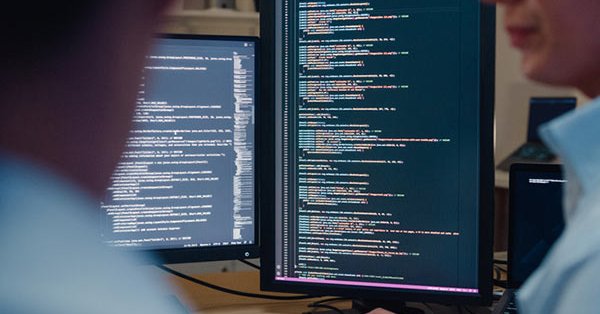
Gustavo de Souza
@GusMicrotoMacro
Followers
3K
Following
595
Media
169
Statuses
516
PhD from @UChicago. @ChicagoFed economist. Opinions are mine. Email: [email protected] Leave me anonymous feedback: https://t.co/mY5RfIf52C
Joined November 2021
🚨New WP🚨 I used to think AI would replace workers. Studying a database with the near universe of commercial AI (including GenAI + factory, and office tools) I found the opposite: AI increases employment by giving low-skilled workers expert knowledge.🧵
10
73
309
MONDAY, 11/10, 11 AM CT: Hear from our panel of experts on how AI is being used to assist with and complete tasks, meet labor challenges, and develop organizational strategies in various sectors. https://t.co/cV0RHGrlIa
0
4
5
The @ChicagoFed published a short summary of my research on AI. I show that, although predictive AI has displaced some white-collar workers, it has increased overall employment by making production workers more productive. https://t.co/EykbT7TpQf
0
4
14
At this @ChicagoFed webinar, I’ll show that AI isn’t just automating jobs. It’s also creating them by changing how people and machines work together. I’ll present the results in a clear and accessible way. Then a great panel w/ @StrongReporter, @professor_ajay & others.
How is artificial intelligence reshaping work, both in the office and on the factory floor? Join the @ChicagoFed on Monday, Nov. 10th at 11:00 AM CT for a virtual event, Artificial Intelligence in the Office and the Factory. We are honored to have framing remarks from Tracey
0
1
16
Join the Economic Mobility Project at the @ChicagoFed on Nov. 10 at 11am CT for a virtual event on how AI is reshaping work in offices and factories. Chicago Fed economist @GusMicrotoMacro will share new research on the impact of AI tools across sectors. Register here:
0
1
3
I am on the #EconJobMarket ! My JMP evaluates what happened to these workers⏬ This is a coal mine in Belgium 🇧🇪 in 1907. They are working more than 10 hours per day. Then, the government imposed a maximum 9h workday. What happens to wages and employment? A JMP🧶(1/12)
17
88
525
.@MaryDalyEcon’s prediction of how AI will affect the labor market is almost a summary of my paper! We both believe that AI is increasing productivity and decreasing inequality by giving workers access to knowledge.
🚨New WP🚨 I used to think AI would replace workers. Studying a database with the near universe of commercial AI (including GenAI + factory, and office tools) I found the opposite: AI increases employment by giving low-skilled workers expert knowledge.🧵
1
2
21
However, when they look into the correlation between mentioning AI and investment or R&D growth, they find it to be much weaker after ChatGPT. My interpretation: firms say that they do AI so they don't look like that weird guy out of fashion. Same thing is likely hapenning in
1
0
1
After ChatGPT, mentions of AI on earnings calls skyrocketed! Just like the number of AI deals have. 2/4
1
0
0
More AI startups or just more people slapping "AI" on everything? @AakashKalyani, @serdarozkanEN, and other folks from the St. Louis Fed (@stlouisfed) have a very nice article with some insights on that. 👇1/4
2
3
6
This pattern in health is similar to what I find in the data more broadly: AI doesn’t just automate. It often expands employment by making workers and machines more productive. I discussed it here: https://t.co/mzNWaf2lLq
🚨New WP🚨 I used to think AI would replace workers. Studying a database with the near universe of commercial AI (including GenAI + factory, and office tools) I found the opposite: AI increases employment by giving low-skilled workers expert knowledge.🧵
0
1
2
Overall, these health AI tools look more like complements to doctors and nurses than replacements. Administrative workers, that used to handle the bureaucracy, are the only ones that could be replaced.
1
0
2
The most important thing their AI does is fill in documents—so doctors spend less time on bureaucracy. It also: • Optimizes schedules by flagging likely no-shows • Predicts revenue & costs from patient trends • Reaches out to guide patients on prep before exams Not so cool
1
0
1
Most of these health AI software focus on organizing patient databases to predict care needs, costs, and optimize doctor time. Take Hospital Sírio-Libanês, one of the best in South America. Their new AI software made the news for exactly that 👇
1
0
1
This figure shows the top 10 most common use of AI software. I built it from an registry with almost all comercial AI software developed in Brazil. Health comes in as the 3rd most common application of AI. Details here: https://t.co/pYDO4slIkB
1
0
1
Jeff Bezos said most AI at Amazon is “quietly but meaningfully improving core operations.” Same in healthcare: flashy “AI diagnosing diseases” gets attention, but most health AI is the quiet kind: saving doctors time & making hospitals more productive. A thread 🧵
In 2016 Geoffrey Hinton said “we should stop training radiologists now" since AI would soon be better at their jobs. He was right: models have outperformed radiologists on benchmarks for ~a decade. Yet radiology jobs are at record highs, with an average salary of $520k. Why?
1
0
4
Just added this piece to my ongoing list of empirical papers on AI
🚨New WP🚨 I used to think AI would replace workers. Studying a database with the near universe of commercial AI (including GenAI + factory, and office tools) I found the opposite: AI increases employment by giving low-skilled workers expert knowledge.🧵
3
7
29
SUMMARY OF H-1B EXECUTIVE ORDER - ENTRY BAN: No H-1B visa holder may enter the United States beginning Sunday September 21st, including current visa holders, unles they pay $100K to enter. - VISA FEE: New H-1B and H-1B extensions must pay 100K to be processed and 100K per year
4K
5K
31K
I just gave my first talk on this paper. It’s nice to finally discuss something I’ve been quietly thinking about for a long time. Key message: AI has increased employment by making both machines and workers more productive. Slides (styled like AI inside an old IBM computer): 🔗
🚨New WP🚨 I used to think AI would replace workers. Studying a database with the near universe of commercial AI (including GenAI + factory, and office tools) I found the opposite: AI increases employment by giving low-skilled workers expert knowledge.🧵
0
0
6
This is an important habit I’m trying to cultivate: plot the raw data. I was trying to explain to a referee why inspections enforcing the quota for disabled workers in Brazil cause such large negative effects on firm growth. But the raw data already gives a clear answer. Before
The Brazilian government requires large firms to hire workers with disabilities. Before writing a paper about this quota for disabled workers, I was exposed to it in several circumstances in my life. I want to take you on a journey on how I transformed these events into a paper
2
13
167








